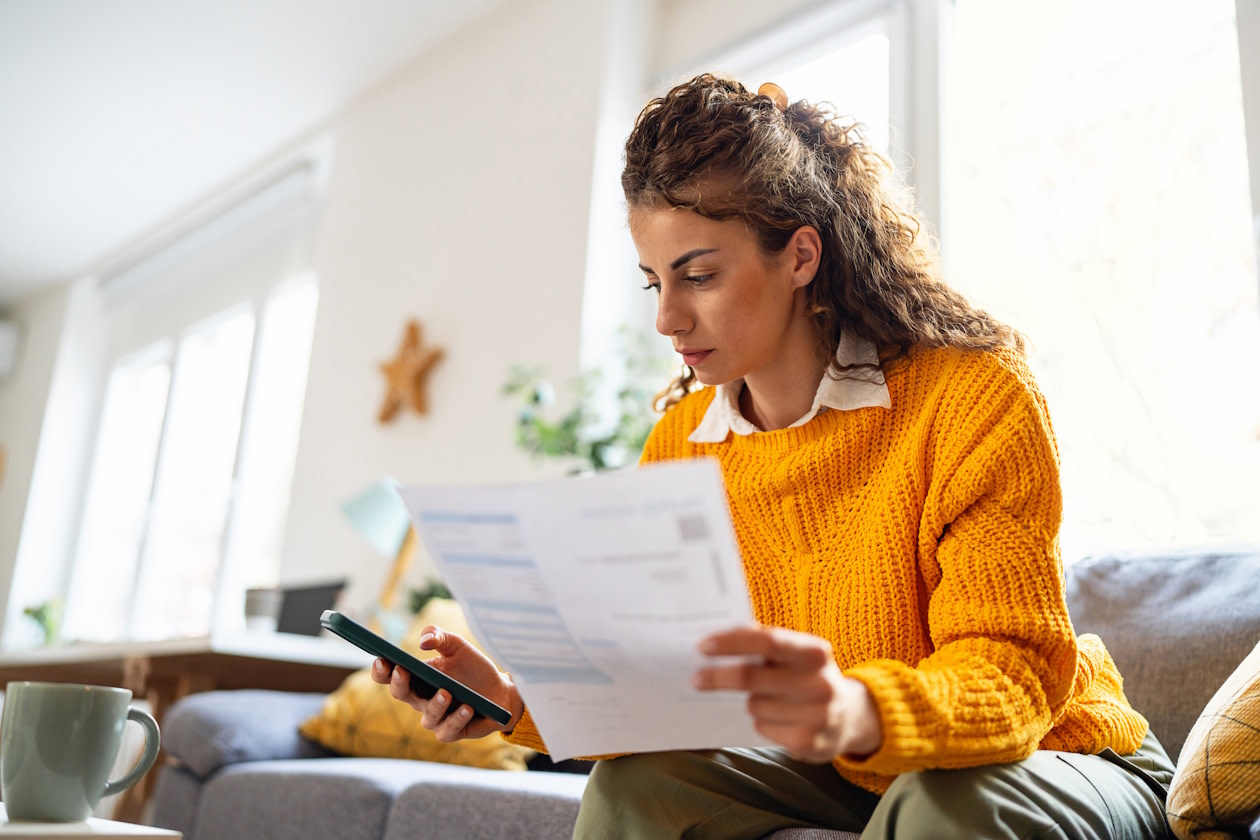In the 2024/25 financial year, we handed over an eye-watering £301.4bn in income tax.
These bills have soared an incredible 85% over the past decade, and are up over a fifth in the past three years alone – since income tax thresholds were frozen.
The fact we’re only part of the way through this freeze means there’s even more pain to come, so it’s going to be vital not to pay more than our fair share of this tax.
Fortunately, there are some steps you can take.
Here are two of the most popular ways to cut your tax bill, and three less well-known tips.
This article isn’t personal advice. If you're not sure if a course of action is right for you, ask for financial advice.
Remember, unlike cash all investments and any income from them can rise and fall in value, so you could get back less than you invest. ISA, pension, VCT and tax rules can change, and benefits depend on your circumstances.
Make the most of your pension allowance
When your money is in a pension, like the Self-Invested Personal Pension (SIPP), it can grow free from UK income and capital gains tax (CGT).
You can get tax relief from the government on what you put in too – boosting your pension pot even further.
As long as you're a UK resident under 75, you can usually pay into a pension as much as you earn, up to £60,000 a year for most people, and get basic-rate tax relief (20%).
Pensions can also be a particularly valuable tool for those paying higher rates of tax or nearing an expensive threshold.
If you pay higher-rate tax (40%), you can claim up to an additional 20% in tax relief through your tax return. If you pay additional-rate tax (45%), you can claim back up to an extra 25%.
So, basic-rate taxpayers can turn £80 into £100 with 20% tax relief.
And if you’re a higher earner, you can claim up to an additional 20% or 25% through your tax return – meaning £100 in your pension could cost as little as £55.
Just remember, different income tax rates and bands apply for Scottish taxpayers. You also usually can’t access your pension until 55 (rising to 57 from 2028).
Close to being a higher or additional-rate taxpayer?
It’s always going to be difficult to predict whether you’re going to get a pay rise this year, and if so, how big it will be. However, it’s worth making an estimate and checking whether this could take you over a tax threshold into paying a higher rate of tax.
If this is the case, you can consider whether it’s worth increasing pension payments now to help keep your income below the threshold.
Make the most of your ISA allowance
It’s also worth thinking about income tax on savings and investments.
Each tax year you get an ISA allowance. This tax year the government is offering the chance to squirrel away up to £20,000 – completely free of tax.
Investing through a Stocks and Shares ISA means you won’t have to pay UK tax on any gains or income from these investments. And if you save through a Cash ISA, you won’t have to pay tax on any interest.
If you make interest above your personal savings allowance (£1,000 for basic-rate taxpayers and £500 for higher-rate taxpayers), you’ll pay tax on the interest with a normal savings accounts.
By using an HL Cash ISA, it’s all protected from tax so basic-rate taxpayers can save 20% income tax on interest they receive from savings. Higher-rate taxpayers save 40% tax and additional-rate payers save 45%.
If there’s a time when you expect to be paying a lower rate of tax, it’s also worth considering whether you can take income then rather than now.
You can, for example, use fixed-term savings that pay interest annually, instead of easy access paying more frequently. This often makes sense just before retirement, as long as you won’t need to access the cash before the term ends.
If this money is currently sitting in accounts paying interest in the current tax year, then from a tax perspective, the sooner you move them, the better.
If you make income from bonds or bond funds, this can also be subject to income tax. So, if you have the available ISA allowance, it’s well worth investing within the tax wrapper.
Open a new HL Stocks and Shares ISA or SIPP today and enjoy 40% off your account charge.
Open your ISA or SIPP and add at least £10,000 (including cash and/or transfers) by 30 June 2025
The 40% discount applies between 1 July and 31 December 2025
If you're transferring, your reduced charge will start once your transfer completes, and continue until 31 December 2025
Need more time to apply to transfer? Contact our Helpdesk.
Important: This offer reduces the HL account charge. Our standard account charge is no more than 0.45% a year. Other investment charges may still apply. Buying and selling funds is free. Share and ETF dealing charges apply. See the full ISA offer terms and SIPP offer terms.
3 more, less well-known, ways to cut your tax bill
Pensions and ISAs are great first steps to help cut your tax bill, but if you’ve already used your allowances, here are three more, less well-known, ways to invest and pay less tax.
Get a £200,000 pension allowance
Many of us can put up to £60,000 per year into our pensions and still benefit from tax relief. But if you have any unused allowances from the past three years, you can also use these through a process called carry forward.
It means you could be able to make a contribution of up to £200,000 to your pension this tax year (as long as you earn at least this amount in the current tax year).
Tax-efficient, cash-like returns from UK government bonds
A gilt is a UK government bond.
It’s a loan to the UK government in return for regular interest payments.
The government will then give the amount you lent to them back when the bond matures (ends).
There are two parts to the return you get when you invest in gilts.
First, interest, which is taxed as income. And any capital gains, which importantly are tax free.
People with large amount of cash savings could use gilts as an extension to a fixed-term Cash ISA. You know at the point of investing exactly how much you’re going to get back if you hold the bond to maturity.
Select the right gilts, those where most of your profit comes from capital gains, and you can earn cash-like returns almost tax free.
Below is a table which shows some gilts available, their yield, maturity dates and the returns coming from tax-free capital gains and interest.
Gilt name | £Price* | Maturity date | Capital (% of returns if held to the maturity date**) | Interest (% of returns if held to the maturity date**) |
|---|---|---|---|---|
Treasury 0.125% | 97.78 | 30/01/2026 | 96% | 4% |
Treasury 0.375% | 95.46 | 22/10/2026 | 89% | 11% |
Treasury 0.25% | 79.54 | 31/07/2031 | 93% | 7% |
*Gilt prices shown are the ‘clean’ prices, exclude accrued interest and are shown per £100 of nominal bonds.
**These are estimated returns based on the prices quoted in the table above. They don’t allow for any potential transaction fees and should be considered as illustrative only.
Consider a venture capital trust (VCT)
A VCT is an investment, run by a fund manager, which invests in and supports the growth of small early-stage unlisted companies – aiming for those with potential to be household names of the future.
Smaller companies are a vital area of the UK economy. They provide jobs, prosperity and economic growth.
But many small companies don’t achieve their full potential meaning VCTs are high-risk and not right for everyone. It’s also difficult to access your money in the short term.
To encourage investment in VCTs, investors receive 30% income tax relief on what they put in, as part of new share issues, as long as you invest for at least five years.
On top of that, investors don’t pay CGT and dividend tax on any gains or income generated.
This is only up to an investment allowance of £200,000 though, meaning you could save up to £60,000 on your income tax bill.
However, you should only consider VCTs if you’re an experienced investor with a larger portfolio, and you’ve already used your ISA and pension allowances.
They should also only form a small part of a diversified portfolio.
The Active Savings service is provided by Hargreaves Lansdown Savings Limited (company number 8355960). Hargreaves Lansdown Savings Limited is authorised by the Financial Conduct Authority under the Electronic Money Regulations 2011 with firm reference 901007 for the issuing of electronic money.
Hargreaves Lansdown Asset Management Limited and Hargreaves Lansdown Savings Limited are subsidiaries of Hargreaves Lansdown plc (company number 2122142).


